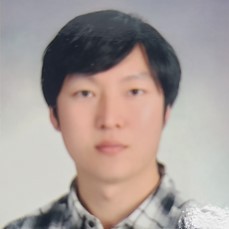About This Project
Avian influenza (AI) threatens poultry worldwide. Existing vaccines are expensive, require injections, and cold storage, limiting large-scale use. We aim to create a low-cost oral vaccine by engineering yeast to express conserved H5N1 antigens and a mucosal adjuvant. After heat-inactivation and drying, the yeast will be mixed into feed, enabling mass vaccination without injections or refrigeration. This strategy offers a simple, scalable, and affordable way to protect poultry from AI outbreaks.
Ask the Scientists
Join The DiscussionWhat is the context of this research?
Avian influenza (AI) is a serious threat to poultry farming, causing major economic losses and food shortages. Highly pathogenic strains like H5N1 have led to mass culling and rising egg prices. Traditional methods like culling and biosecurity are often insufficient. Existing vaccines are costly, require injections, and depend on cold storage, making them impractical for large farms. Rapid virus mutations also limit vaccine effectiveness. To overcome these challenges, we propose an oral vaccine using yeast engineered to express conserved H5N1 antigens with a mucosal adjuvant. After heat inactivation and drying, the yeast powder can be mixed into feed, allowing easy mass vaccination without injections or refrigeration. This approach could provide a scalable, low-cost solution to protect poultry health, reduce economic losses, and strengthen global food security.
What is the significance of this project?
This project addresses a critical need for affordable, scalable vaccination against avian influenza (AI), which continues to cause severe outbreaks worldwide. These outbreaks result in poultry loss, economic damage, and rising food insecurity. We propose a yeast-based oral vaccine expressing conserved H5N1 antigens with a mucosal adjuvant. The vaccine is heat-inactivated and dried, allowing easy mixing into feed without the need for injections or cold storage. This reduces labor and cost, enabling mass application on large farms. Targeting conserved regions may offer broader protection against AI variants. The platform can be adapted to other livestock diseases, supporting long-term food security and outbreak response.
What are the goals of the project?
The main goal of this project is to develop a low-cost, feed-based oral vaccine candidate against avian influenza (AI) for poultry. We aim to engineer Saccharomyces cerevisiae to express conserved regions of the H5N1 virus’s hemagglutinin (HA2) and neuraminidase (NA1) proteins, which are less variable across strains and involved in viral entry and release. These antigens will be fused with a mucosal adjuvant (PltB), and the yeast will be heat-inactivated, dried into powder, and mixed into poultry feed. This project focuses on constructing the synthetic gene, confirming expression in yeast, producing a stable powder, and verifying feed compatibility. Animal testing is not included in this phase but is planned for a future project to evaluate vaccine efficacy.
Budget
Gene synthesis is essential to create the DNA sequence encoding conserved H5N1 antigens (HA2 and NA1) fused with the PltB mucosal adjuvant. This allows efficient protein production in yeast. Without the synthetic gene, it would be impossible to generate the recombinant yeast needed for the vaccine. Labor costs cover essential work: yeast transformation, culture, confirmation of protein expression, inactivation, and drying into powder form. These steps require technical skill and several weeks of laboratory time. Consumables like media, antibiotics, reagents, and drying materials are necessary to grow and process the yeast safely and effectively. Together, these items enable full development of the oral vaccine candidate — from gene design to inactivated yeast powder ready for feed mixing and testing.
Endorsed by
 Project Timeline
Project Timeline
In the first month, we will order and receive the synthesized gene for the vaccine construct. In the following one to two months, we will perform yeast transformation, culture, and confirm antigen expression. The engineered yeast will then be heat-inactivated, dried into powder, and prepared for feed mixing. We aim to complete vaccine candidate production and stability evaluation within three months from the start of the project.
May 26, 2025
Project Launched
Jun 30, 2025
Gene synthesis ordered and delivered (Month 1) Successfully receive the synthetic HA2–PltB–NA1 fusion gene
Aug 31, 2025
Yeast transformation and antigen expression confirmed (Month 2) Transform yeast with the construct and verify protein expression via Western blot
Sep 30, 2025
Production of inactivated, dried yeast powder (Month 3) Grow engineered yeast, perform heat-inactivation, and create stable powder formulation.
Dec 31, 2025
Due to budget limitations, feed mixing and storage stability testing will be planned for a future phase after initial vaccine candidate production is completed.
Meet the Team
Team Bio
I am not currently receiving additional funding from other sources. However, my personal laboratory is fully equipped for DNA and protein work, with the necessary instruments and environment to carry out molecular biology experiments. This project aims to generate a vaccine candidate by expressing a fusion of vaccine antigens and an immunostimulatory protein in yeast. In the future, I plan to pursue follow-up projects to evaluate the efficacy and stability of the resulting candidate.
Hyunho Shin
Korea Disease Control and Prevention Agency 2005.02 ~ 2008.03
Foodmus H&S Research Institute 2008.03 ~ 2011.07
Ewha Womans University Industry-Academic Cooperation Foundation 2011.10 ~ 2013.03
Hanwha Hotels & Resorts Co., Ltd. 2013.02 ~ 2016.04
DIYBio Lab 2016.05 ~ 2017.02
Korea University College of Medicine 2016.09 ~ 2017.02
Korea Bureau Veritas Co., Ltd. 2017.03 ~ 2023.07
Noctuabio 2023.11 ~ Currently employed
Currently, at Noctuabio, I am leveraging my experience to focus on cutting-edge biotechnology research, particularly in therapeutic development. My professional journey demonstrates adaptability, interdisciplinary collaboration, and a strong dedication to improving public health through science and innovation.
Lab Notes
Nothing posted yet.
Additional Information
Avian influenza (AI) outbreaks have escalated globally in 2024-2025, leading to record poultry losses, rising food prices, and increasing concerns about global food security. Traditional control methods like culling and injected vaccines are struggling to keep up with the scale and speed of these outbreaks. There is a pressing need for a practical, affordable mass vaccination strategy that can be rapidly deployed on large farms without the burden of injections or cold-chain logistics. This project directly addresses that gap by proposing a feed-based oral vaccine using engineered yeast.
I have prior experience in yeast engineering, antigen design, and protein expression, and have already validated key techniques required for this project, including gene synthesis, yeast transformation, and heat-inactivation protocols. These foundations greatly enhance the feasibility and likelihood of success within the proposed timeline and budget.
Beyond avian influenza, the yeast-based oral vaccine platform offers the potential to adapt quickly to other livestock and aquaculture diseases. It could become a general tool for scalable epidemic preparedness in agriculture, reducing economic losses and stabilizing food supplies globally.
I am deeply motivated by the urgent need to build more resilient, sustainable food systems. I believe this project can contribute a practical and impactful solution toward that goal.
Project Backers
- 1Backers
- 2%Funded
- $100Total Donations
- $100.00Average Donation

